WDM connects with Carl Gustav Magnusson and Emanuela Frattini Magnusson on their design process and new product offerings.
At WDM we are always excited to see new products that will enhance the workplace experience. We recently had the opportunity to connect with two of the most innovative designers in our industry and find out more about four new product introductions for Allseating. We were able to preview the products and find out more about the inspiration behind each.
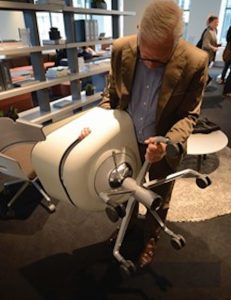
The incomparable Carl Gustav Magnusson and Emanuela Frattini Magnusson are long-time collaborators both in life and professionally. Each one of them brings a unique perspective to their recent work for Allseating with the launch of Prata, Lyss, and Zinc (seating), as well as Engadin (textiles). But, more on those later! We want to first talk about their process and thoughts behind each distinct product offering. Carl’s background in industrial design has led him to create products ranging from furniture to automotive designs and consumer products.
Emanuela Frattini Magnusson is a world renowned architect with a multi-disciplinary studio for architecture, interiors, and product design. Her career has encompassed the planning and design of large scale architectural and interior design projects to product designs scaling from furniture, textiles, and jewelry. She is also actively engaged in her work with Operation Design, a not-for-profit organization that creates art and design mentorship programs for NYC public schools.
With their collective wealth of experience and broad portfolio of designs, we wanted to find out more about these new collaborations.
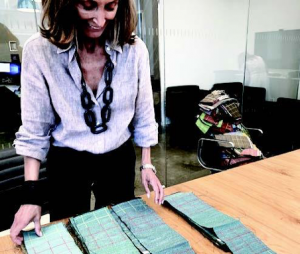
WDM: Launching one product is daunting, launching four is considerable. We know you previously worked with Allseating, but is this your first product design collaboration?
Emanuela: We do not collaborate in the traditional sense of the word as we have always had our two separate practices, projects and clients. But being in the same profession, we work as a team by being each other’s straight forward, unfiltered critic––honest constructive criticism is the best asset in any project.
Carl: I have worked with Allseating previously and Emanuela had met the team there over the years. They were familiar with her work and commissioned her independently of the products I was working on. As Emanuela mentioned, we both work in design, and while she takes the lead on architecture, interiors, graphics, textiles and objects, I gravitate towards systems, furniture and objects.
WDM: How did you determine the design direction for each product? Was there a clear mandate from Allseating or did you collaborate on what you thought needed to be brought to market?
Carl: The design direction is an amalgam of a concise brief and an intuitive sense of what the market needs, not necessarily its expectations. Therefore the design often becomes the brief.
Emanuela: Allseating’s Vice President of Marketing, Laura Barski, had been planning a proprietary textile collection to use on their products, and had seen my previous work in textiles. I was thrilled to be asked to work with them on this new venture. The constraints, which are often a starting point for a new design, guided choices in construction and fibers. For the aesthetic aspect, I thought of patterns that would be appropriate and distinctive for their products.
WDM: In outlining your plan for each product, did you discuss your individual inspiration(s), concepts prior to bringing “pen to paper” so to speak? Where do you typically start?
Carl: I begin with a pencil sketch and delay any digital interaction because sketches record the history of the idea which you can return to. They are intentionally imperfect as opposed to digital drawings where lines are so straight they tend to seduce oneself into believing the idea is good or finished. Then, we critique each other within the definition of “design is function with cultural content.” Understanding the function is critical before folding in the cultural content and melding them into a solution.
Emanuela: I agree with the immediate connection that pen to paper has to your subconscious versus the filter of a mouse or digital pen. It is still the best medium for the first explorations. I have a bit of “horror vacui,” fear of the blank page, and I like to have the hook of a constraint. Typically when dealing with that, ideas start to emerge and it becomes a negotiation between left and right brain aspects!*
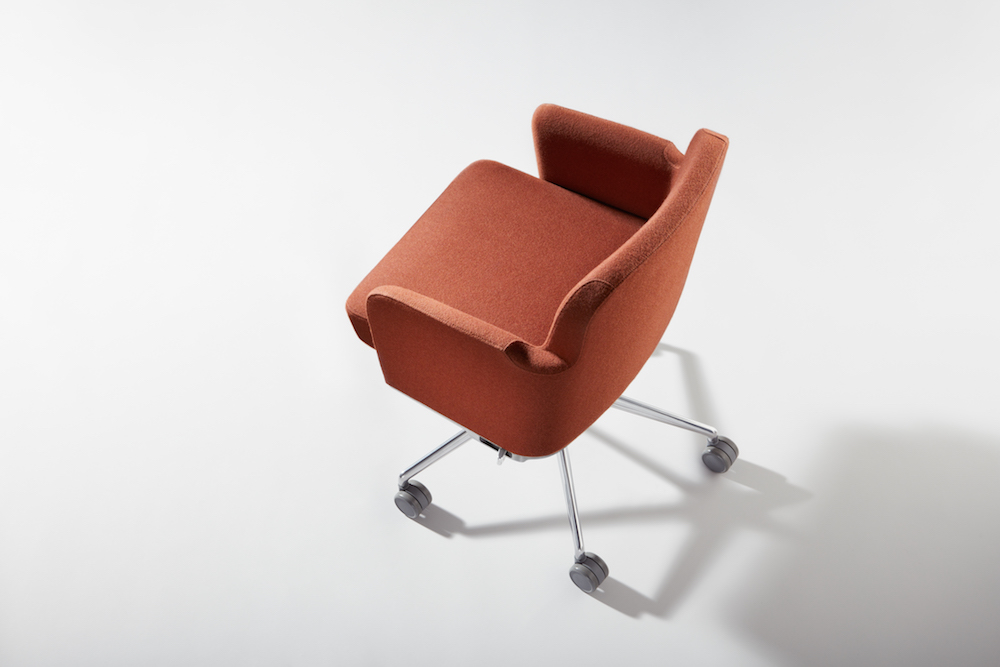
WDM: Each product is unique in its own way, but is there a unifying thread behind the designs – related to the trends you are seeing in workplace design right now?
Carl: You can’t escape the influence of trends as they are the time we live in. But you can transcend trends by understanding history and a projection of the future. A conference room usually consists of multiple chairs, so Prata needs to look as part of a group—not a stand alone object. As you enter a room, the chair is approached from the back, so it needs to be inviting, hence the round shapes. Its aesthetics are on the neutral spectrum as it needs to complement the table (which is seldom designed together with chairs) yet distinctive through its details. The arms are recessive so as not to be in touch with the table’s edge. The back then folds into the arm via an undulating curved plane that in turn offers another opportunity to exhibit Allseating’s mastery in upholstery. The massing of the upholstery package is substantial but not overpowering as it sits onto the polished cast aluminum seat frame. The below image outlines the upholstery in one crisp line.
WDM: How did you interpret the current trends in workplace design to inform the design direction for Prata?
Carl: Usually you do not know which chair you will be occupying (in a conference setting), so a height and tilt adjustment is expected when you sit. As most chairs utilize standard mechanisms and adjustment levers, the adjustment is made by looking down and groping for a farm implement-like lever. It is this ungainly activity that I identified as the differentiating opportunity to improve upon.
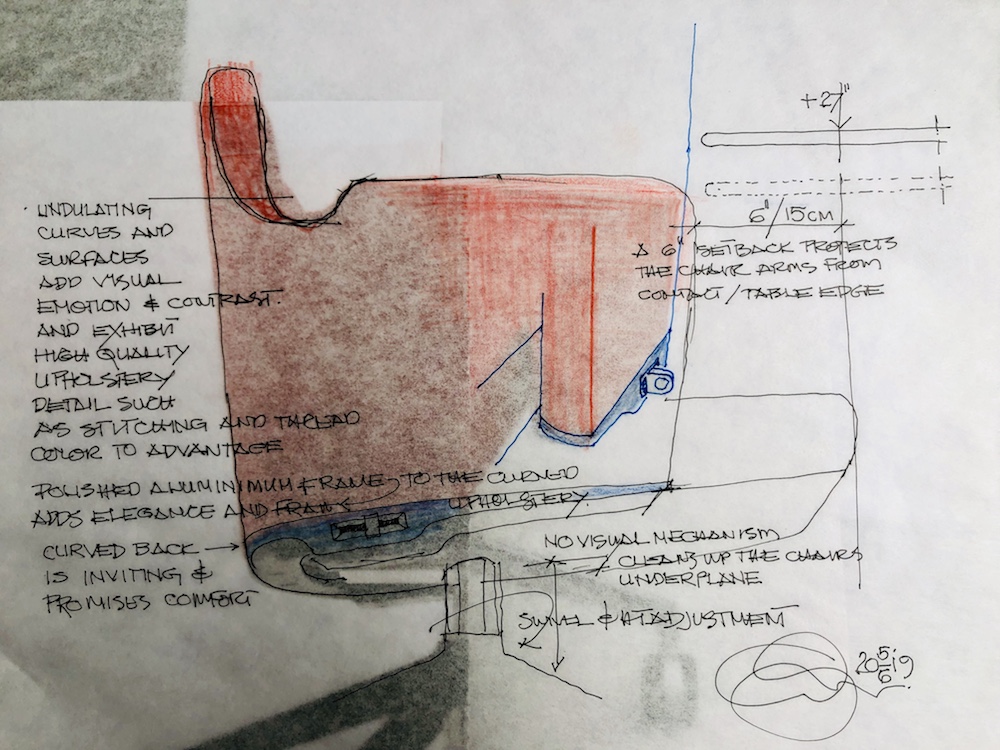
WDM: From a functional standpoint what sets them apart from others in this seating category?
Carl: With Prata, the hands intuitively fall to the polished aluminum mini levers, inviting an obvious action to adjust the height or tilt of the chair. Visually, the large under-the-seat mechanism and levers are completely gone, replaced by elegant mini levers inviting to the touch. The elegant aluminum spider base finishes the design composition. The overall result is a design that will transcend trends and will serve the user in an elegant manner for decades.

WDM: Prata is just one of your collaborations with Allseating. Can you tell us more about the second, Lyss?
Carl: Lyss was a response to a different brief: an upholstered shell side chair to accept various bases for different functional applications such as, informal conference rooms, breakout areas, and waiting spaces. The chair’s transition from the back plane to the arm is punctuated by a lapel shaped indentation. This accentuates the form as it flows into the seat. The aluminum base is a proprietary design for Lyss which allows either four or five prongs to be fitted thereby lowering tooling cost and freight.
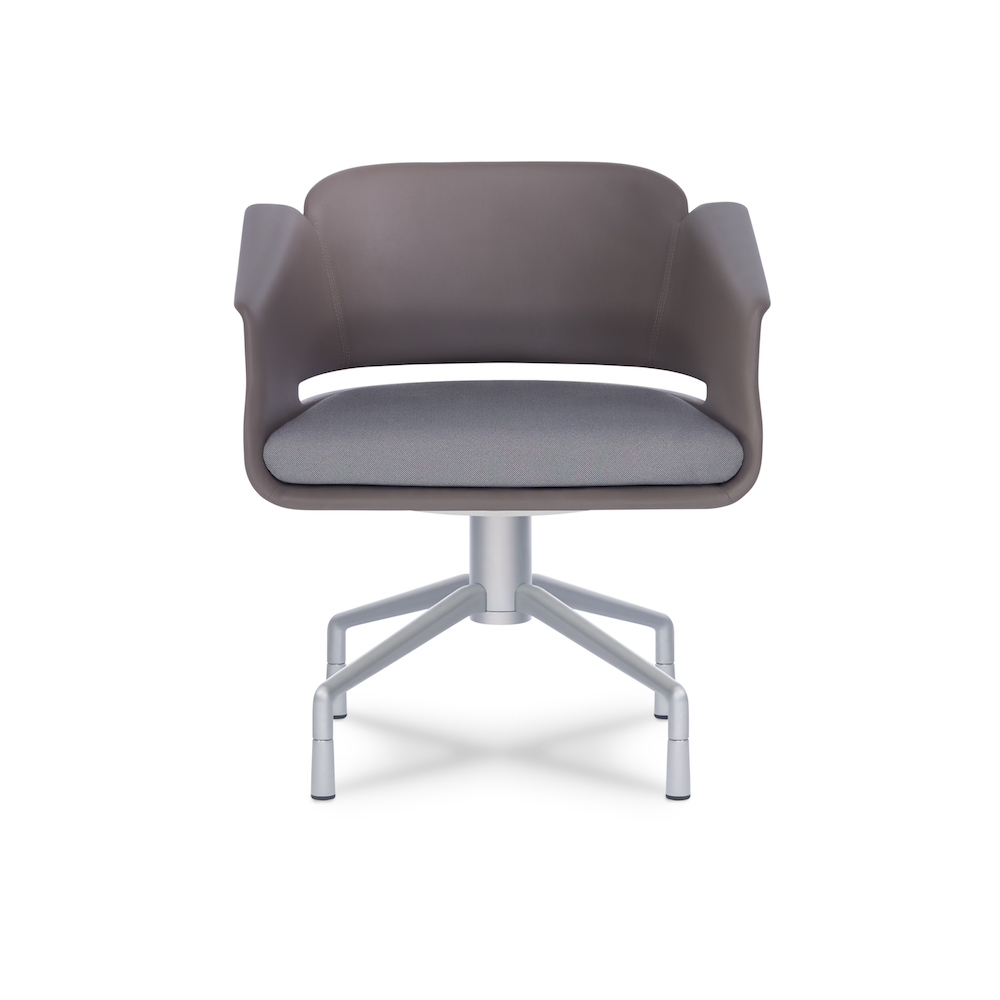
WDM: What inspired your design for Zinc? And what are some of its standout design features?
Carl: Zinc, the third design and collaboration with Allseating, is a fresh entry into the stacking shell chair contract market. Again, several original base designs allow for various uses such as a simple four-legged model, a wooden base, optional arms and the sled stacking and ganging version. With this design, we invented an integrated ganging device so that no additional parts will need to be ordered or lost after years of use.

WDM: Your biography tells us that you have a deep interest in automotive design, especially classic cars. How does that affect your product design solutions?
Carl: My awareness of, and obsession with design, began at age 12 with sketching and at 15 with my first car, a 34 Chevy, which I hot rodded. It taught me about construction, assembly, materials, finishes, motion, heat and bruised knuckles. Classic cars continue to be my inspiration as they are totally analog, demanding one’s full engagement as a design must.
WDM: Switching from seating to textiles, we turn to Emanuela for the download on her design for the Engadin fabric collection. What are the key elements of this product line?
Emanuela: I was commissioned to develop a collection for contract interiors. Engadin comprises three patterns that are different in nature and scale, and can stand on their own or coexist. The same approach is true for the respective color ways, for which my goal was to obtain a balance between an expected foundation of neutrals and a fresh clarity of complementary colors.
WDM: What about the technical specifications?
Emanuela: Technical specifications include the line’s durability, antimicrobial properties maintaining softness to the touch, and competitive price point. These were the guiding principles that delineated the boundaries for the product development process. The most challenging and difficult part is narrowing down the color selections to the final edit. If it had been up to me I would have wanted them all!
WDM: Can you elaborate on your original vision for the Engadin collection, and how the product came to life throughout the design process?
Emanuela: The name of the collection, Engadin, is pure stream of consciousness thinking! Looking at the color ways, the greys, greens and aquas, the yellow and the red, reminded me of pictures taken during the many summers we spent in Sils Maria in the Engadin. The granite of the mountains, the blue and green of the lakes, the yellow of the larch trees in the fall and the red that shows up everywhere in Swiss signage brought it all together.
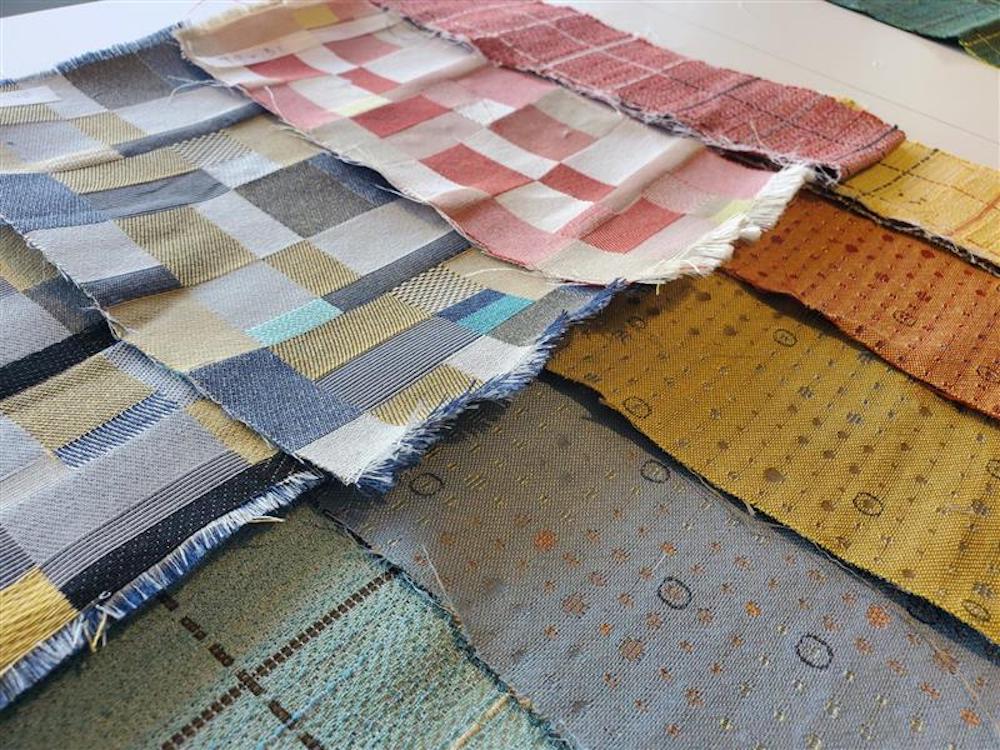
WDM: Where does the design inspiration for the patterns come from?
Emanuela: I developed three patterns, Dots, Grid and Bauhaus, that are based on geometric shapes, a linear grid, a loose dot pattern and rectilinear color fields. They have different “color balances” meaning that applying the same color way to the three types of patterns results in three very different outcomes––however there is a common thread that pulls them together. The Dots pattern is more playful, freehand, and softens the rigor of the other two, whereas Bauhaus depending on color way can be very decorative and bold. Grid in the same color way is much more subtle, and they balance each other.

Connect with Allseating:
Find your local rep here.
LinkedIn | Instagram | YouTube

